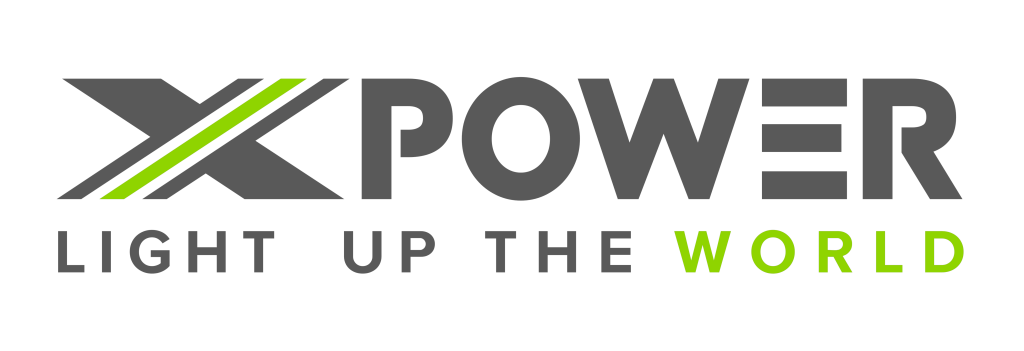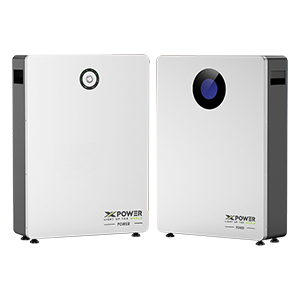寻找太阳能电池板最佳安装位置的友好指南
发布时间:2024-07-09
关于作者:
欢迎!我很荣幸向大家介绍我们的品牌—— 电源,这本太阳能电池技术指南的作者。Xpower 在太阳能光伏 (PV) 行业拥有超过 15 年的经验,为我们提供丰富的知识和专业技能。
Xpower作为太阳能领域的制造商和出口商,通过多年的实践经验,我们见证了太阳能电池技术的发展及其对可再生能源格局的变革性影响。

欢迎来到阳光能源!安装太阳能电池板是减少电费并对环境产生积极影响的绝佳方式。但您是否知道,太阳能电池板的放置位置和方式会显著影响其效率?让我们深入了解一些全面的技巧,以帮助您充分利用太阳能电池板。
目录
我的太阳能电池板应朝向哪个方向?
将您的太阳能电池板想象成向日葵——它们喜欢吸收尽可能多的阳光。如果您居住在北半球,例如美国或欧洲,则需要让太阳能电池板朝南。这种朝向可让它们从早到晚吸收阳光,从而最大限度地提高全天的能量产量。
对于南半球的人们,比如澳大利亚,朝北的太阳能电池板是理想的选择。这样可以确保太阳能电池板能接收到最直接的阳光。如果你大部分的电力是在早上或傍晚用完的,朝东或朝西的太阳能电池板也可以使用,但它们的效率不如朝南或朝北的太阳能电池板。

方向为何如此重要?
太阳能电池板的朝向决定了它们一天内能捕获多少阳光。北半球朝南的太阳能电池板和南半球朝北的太阳能电池板全年都能接收到最稳定、最直接的阳光。这可以最大限度地提高太阳能电池板产生的能量,从而节省更多的电费。
角度怎么样?
太阳能电池板的角度或倾斜度同样重要。一般的经验法则是让太阳能电池板的倾斜度与所在纬度相匹配。例如,如果您所在的纬度为 40°,则太阳能电池板的理想倾斜度应为 40°。此角度有助于太阳能电池板全年有效捕捉太阳光线 - 夏季在天空中的位置较高,冬季在天空中的位置较低。
季节性调整
一些先进的系统允许根据季节调整倾斜角度。冬季,倾斜角度越大(纬度 + 15°)越有助于捕捉较低的太阳光,而夏季,倾斜角度越小(纬度 - 15°)越能最大限度地捕捉较高的太阳光。但是,对于大多数住宅设置,根据您的纬度设置固定倾斜角度可以提供良好的平衡。
方向与角度:哪个更重要?
方向和角度对太阳能电池板的效率都起着至关重要的作用,但如果必须优先考虑一个,方向通常是优先的。确保太阳能电池板朝向正确的方向(北半球朝南,南半球朝北)可确保它们全天都能获得充足的阳光。角度可进一步微调这一点,从而提高性能。
我的屋顶设计如何影响太阳能电池板的放置?
屋顶就像是太阳能杰作的画布。以下是需要考虑的事项:
沥青: 陡峭的屋顶可能自然会接近最佳角度,而平屋顶可能需要有角度的安装才能实现最佳倾斜度。
尺寸和形状: 开放空间越大越好。避免阴凉处是最大程度利用阳光的关键。
力量: 确保屋顶状况良好,可以支撑面板。有时,较旧的屋顶可能需要加固,甚至在安装前更换。

屋顶材料注意事项
沥青瓦: 对于安装人员来说很常见并且易于操作。
瓦屋顶: 需要小心处理以避免损坏。
金属屋顶: 耐用且通常是太阳能装置的理想选择。
平屋顶: 可能需要特殊的安装系统才能达到正确的角度。
太阳能电池板必须安装在屋顶上吗?
绝对不是!虽然屋顶是常见的选择,但太阳能电池板的放置位置还有很多其他选择:
地面安装系统
如果您的屋顶不太理想,您可以将太阳能电池板放置在地面上。 地面安装太阳能电池板系统 具有多种优势:
可调节的倾斜度和方向:可以将其设置为完美的角度和方向,以实现最高效率。
更容易维护:位于地面,更容易进行清洁和维修。
无需穿透屋顶:避免屋顶漏水的潜在问题。
太阳能车棚和凉亭
这些结构集遮阳和发电于一体。它们非常适合:
停车区:发电的同时保护您的汽车免受阳光照射。
户外生活空间:创建一个用于放松或娱乐的阴凉区域。
某些类型的太阳能电池板是否比其他类型更好?
是的,不同类型的面板具有各种优点。下面详细介绍一下:
单晶太阳能电池板
效率:效率高,适合屋顶空间有限的家庭。
寿命:寿命长,一般超过25年。
外观:光滑的黑色外观,通常被认为更美观。
多晶硅 太阳的 面板
效率:效率比单晶略低,但仍然有效。
成本:更经济实惠,如果您有足够的空间,它们是一个不错的选择。
外观:通常为蓝色,外观不太均匀。
薄膜 太阳的 面板
灵活性:重量轻且灵活,非常适合非传统表面。
安装:更容易安装在弯曲或不规则的屋顶上。
效率:通常效率较低,但随着技术进步而提高。

处理阴影:朋友还是敌人?
阴影是影响太阳能电池板效率的最大敌人之一。即使是少量的阴影也会显著降低输出。以下是需要考虑的事项:
阴凉处
树木:考虑修剪或移除投射明显阴影的树木。
建筑物:附近的建筑物可以产生持续的阴凉。
烟囱和通风口:屋顶障碍物会在太阳能电池板上投下阴影。
减轻阴影的技术
微型逆变器:允许每个面板独立运行,从而减少阴影对整个系统的影响。
优化器:与微型逆变器类似,它们单独优化每个面板的性能。
当地气候和天气模式
当地的气候对太阳能效率有影响。以下是需要考虑的事项:
阳光灿烂的日子
阳光越多,发电量越大。阳光充足的地区是安装太阳能电池板的理想地点。
多云或下雨
阴天时太阳能电池板仍能发电,但效率会下降。如果您居住的地方经常有云层覆盖,请考虑稍微加大系统尺寸。
冰雪
如果您住在多雪地区,请确保您的太阳能电池板安装的角度能让雪滑落。雪通常影响较小,因为它会反射阳光,而当雪快速融化时,这实际上可以提高效率。
维护和使用寿命
维护太阳能电池板是确保其在整个使用寿命期间表现良好的关键:
打扫
灰尘、污垢和碎屑会降低效率。定期清洁(通常每年两次)可使它们保持最佳状态。
监控
许多系统都配有监控工具来跟踪性能。这可以提前提醒您注意任何问题。
保修
大多数面板都有 20-25 年的保修期,涵盖性能和耐用性。定期检查可确保它们符合这些保证。
结论
安装太阳能电池板需要一些规划,但只要方向、角度和设置正确,您很快就能享受到清洁的可再生能源。无论您是选择屋顶安装、地面安装还是其他有创意的方式,请记住,您捕捉到的每一点阳光都有助于为更绿色的未来提供动力。祝您太阳能之旅愉快!
如果您还有任何问题或需要进一步帮助,请随时联系我们。享受阳光吧!
通过考虑所有这些因素,您可以最大限度地提高太阳能电池板系统的效率和使用寿命,确保它满足您的能源需求并有助于在未来几年保护环境。





